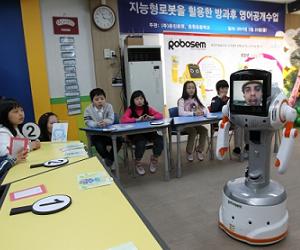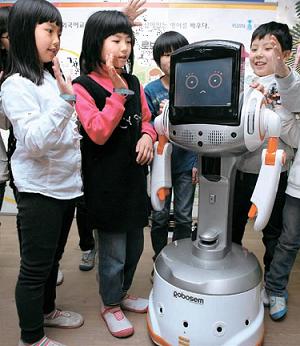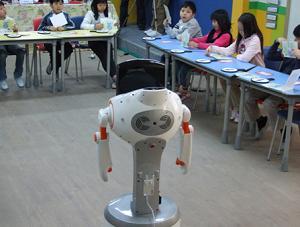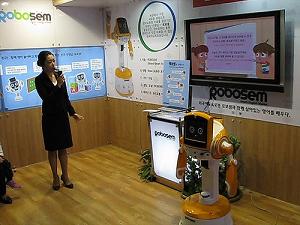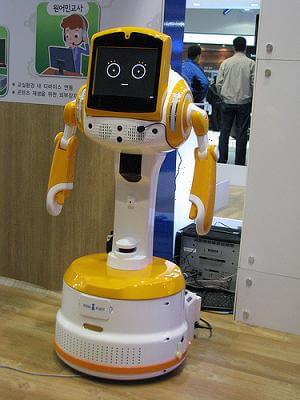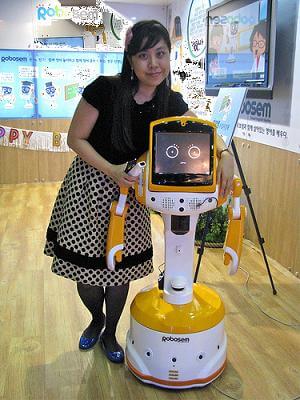Another Robot Teacher Enters Korean Classrooms

Share
In the next three years, South Korea is going to suffer a massive invasion. Not from the North, but from robots conquering its classrooms. As part of the nation's big plans for introducing automated systems to all levels of education, major robotics developers have been unveiling new designs for machines that could help students learn. Since late last year, Yujin Robotics has been demonstrating Robosem, a telepresence enabled bot that can teach basic lessons or allow a remote human instructor to teleconference into a class. It recently complete several weeks of testing in elementary schools. Like many other such platforms, Yujin's bot is focused on English instruction (a subject that has required Korea to import many foreign tutors). Check out all the great pics of the classroom friendly robot below. Robosem is just one of many different machines that could help South Korea achieve its goal of placing a robot in every kindergarten by 2013.
Like many other classroom robots we've covered in the past, Robosem pairs a large LCD display with teleconference accessories (camera, mic, speakers, etc) wrapped inside a friendly frame meant to appeal to younger audiences. It comes loaded with several lessons it can step children through autonomously, or it can be operated remotely as a telerobot for live instruction via its monitor. Many thanks to PlasticPals for recognizing that Robosem is an adaptation of Yujin's CafeRo service robot the company revealed several years ago. It's unclear if Robosem's arms are for gesturing use only, or if they can grasp trays and lift light objects as Cafero's could. Undoubtedly the acoustic and visual sensors developed to help Cafero navigate a crowded restaurant will serve Robosem well in the chaos of a kindergarten.
South Korea has been one of the leaders (perhaps the leader) in pushing for educational robots in traditional classroom settings. The fact that they have attracted not one, but many successful companies to develop machines that could satisfy their 2013 goal is a great sign that the nation might actually be successful to that end. A generation of young students would not only have the direct experience of working with robots, they may be inspired to pursue a career in that industry or science in general.
If South Korea is ultimately able to integrate robotics into their education system, I think we can expect many other countries to adopt the technologies that are developed for their goals. Other nations should take note of this investment. Want global industries to take your cultural norms and your preferences into consideration when developing a ground breaking device? The first to sponsor visionary projects are the ones that set the terms. Maybe the Robot Race will be to the 21st Century what the Space Race was to the 20th.
My fingers are crossed.
Be Part of the Future
Sign up to receive top stories about groundbreaking technologies and visionary thinkers from SingularityHub.


The following pics are from an earlier demonstration in October of 2010. Photos by Chris Chesher.
[image credits: MSN, CCDaily News, Chris Chesher via Flickr]
[sources: MSN, CCDailyNews, PlasticPals]
Related Articles

These Robots Are the Size of Single Cells and Cost Just a Penny Apiece

In Wild Experiment, Surgeon Uses Robot to Remove Blood Clot in Brain 4,000 Miles Away

A Squishy New Robotic ‘Eye’ Automatically Focuses Like Our Own
What we’re reading
